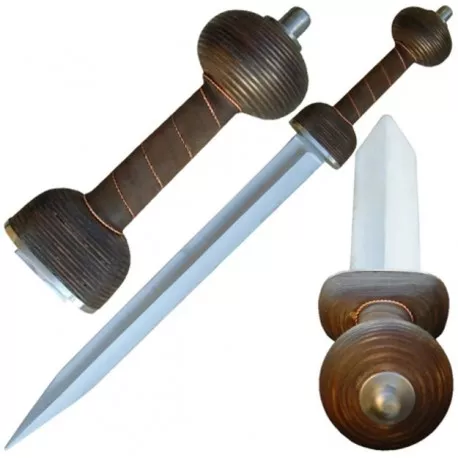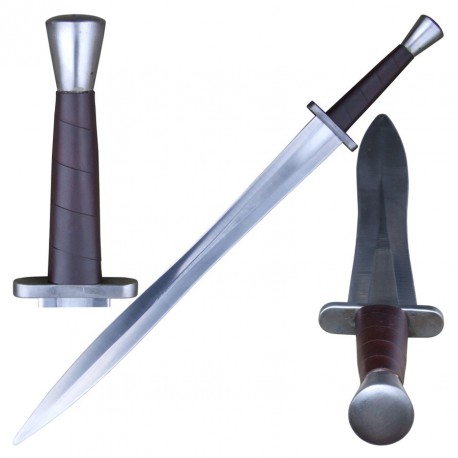Gladius Vs. Spatha: Duel of Roman Swords
In the fascinating world of ancient Rome, weapons played a crucial role in the expansion and defense of the empire. Among the most emblematic were two swords that represented different tactics and combat styles: the gladius and the spatha. Next, we will explore their characteristics, uses, and differences.
The Gladius
The gladius, also known as gladius Hispaniensis, was the main sword used by Roman legionaries for around 400 years, from the 3rd century BC to the 2nd century AD. Its short and robust structure was designed for hand-to-hand combat.
Characteristics:
- Length: Approximately 25 inches (63 cm).
- Use: Especially effective for stabbing and thrusting attacks.
- History: Adapted from Celtiberian swords during the Punic Wars.
Use in Combat:
Legionaries received intense training with the gladius, focusing on quick and precise thrusts. Its lightness allowed for agile and effective maneuvers in compact formations.

The Spatha
In contrast, the spatha was a longer and heavier sword, originating from the Central European Celtic region. It became popular among Roman cavalry units, and later, among infantry.
Characteristics:
- Length: Approximately 30-40 inches (76-102 cm).
- Use: Ideal for slashing attacks and keeping distance from the enemy.
- History: Inspired by Celtic swords, adopted by the Romans in the 1st century BC and widely used from the 2nd century AD.
Use in Combat:
The spatha provided soldiers with superior reach, favoring battles where distance was beneficial, particularly in engagements involving cavalry.

Comparison between Gladius and Spatha
| Characteristic | Gladius | Spatha |
| Length | 25 inches (63 cm) | 30-40 inches (76-102 cm) |
| Use | Close combat, stabbing | Distance combat, slashing |
| History | Adapted from Celtiberian swords | Inspired by Central European Celtic swords |
| Training | Intensive training for stabbing | Training to maintain distance and perform slashes |
Both the gladius and the spatha represent significant stages in the evolution of Roman weaponry, each suited for different contexts and combat styles. The choice between one or the other varied according to the circumstances of the engagement, reflecting the adaptability and strategy of the ancient Romans.
















